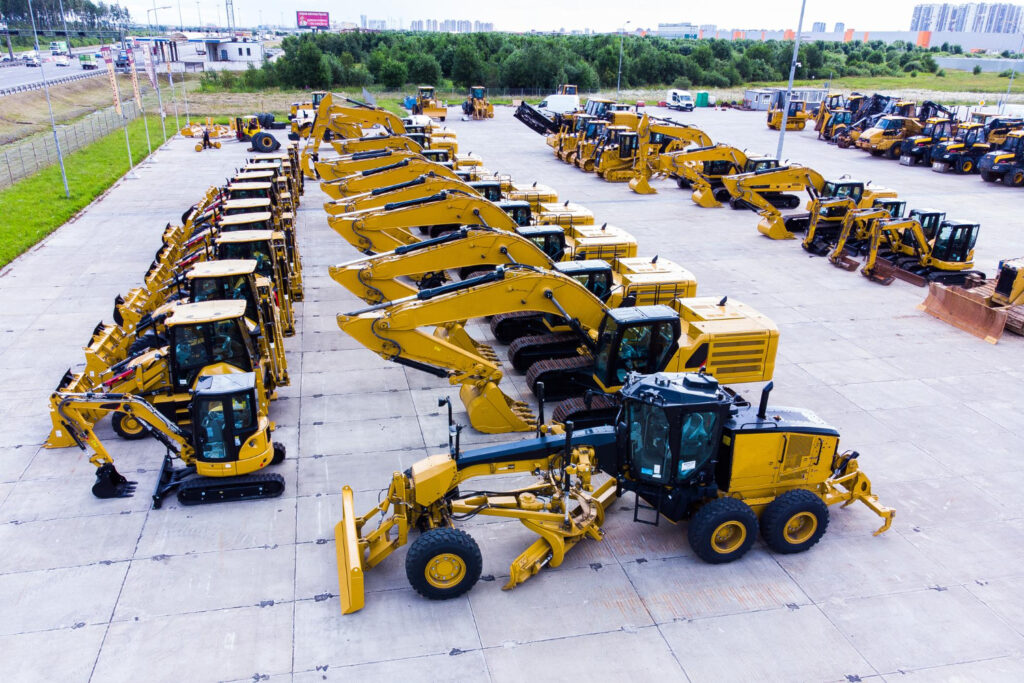Trends in energy management, the development of electric and hybrid vehicles, as well as innovations in fleet management and labor optimization are influencing manufacturers and operators of off-highway machinery. The application of modern solutions from these areas can significantly contribute to improving the energy efficiency of the entire off-highway sector.
Off-highway machinery designed for operation in difficult off-road conditions is widely used in sectors such as construction, agriculture, mining, and forestry, among others. The specific nature of the use of such equipment consumes significant amounts of fuel, generating both exhaust and noise emissions.
In the face of global environmental and sustainability challenges, the off-highway machinery industry is facing the need to adapt to new, more stringent energy efficiency standards. Technological developments and innovations are opening up new opportunities for equipment manufacturers, allowing them to reduce their environmental impact while increasing operational efficiency and lowering operating costs.
With the rapid development of the automotive industry, the availability of solutions to increase energy efficiency is increasing in the off-highway machinery sector as well. However, adaptation to new trends in this case is relatively slow. This is because the simple replication of a single solution for diverse off-highway vehicles is rarely applicable. The selection of the right technology depends on the design, weight, purpose, and use cases or duty cycles, as well as the power and torque requirements of individual machines.

However, there are already a number of solutions that can be used to deliver more energy-efficient off-highway vehicles. We have highlighted some of them below:
Manufacturers aren’t the only ones with a stake in improving the energy efficiency of off-road machines. The energy efficiency of equipment also depends on how it is used and other factors related to fleet management. On their way to reducing the carbon footprint of the equipment they use, users of off-highway machinery can benefit from the following solutions, for example:

The off-highway machinery industry is currently transforming, driven by the need for sustainability and technological innovation. For companies operating in this area, the ability to anticipate trends, flexibility in decision-making, and willingness to invest in new technologies are becoming crucial.
Growing environmental pressures are forcing the off-highway sector to take significant steps toward improving the energy efficiency of machinery. Increasing environmental awareness, supported by increasingly stringent emissions regulations, is opening up unique opportunities for manufacturers to transform the industry in a more sustainable direction. However, in transforming the off-highway industry, it is crucial not only to adapt the design of the solutions offered but also to educate operators and maintain high maintenance standards. The ultimate goal is to achieve harmony between energy efficiency and minimizing the environmental footprint of the entire sector.
Companies that take on the challenge of adapting to the new standards will not only meet market expectations but also contribute to a more sustainable future. These companies have the opportunity to shape the landscape of the entire off-highway sector, leading it toward more efficient and environmentally friendly machine operation.
If you are looking for support in designing energy-efficient off-highway machinery, we cordially invite you to learn more about our experience and expertise in this field and to contact us.
If you think about car… is it complicated? Chassy, wheels, engine, gearbox, stereo, air condition and you’re good to go. Well, cars are not so simple anymore. Automotive business evolved, and cars are no longer only about driving, it’s about how you spend you’re time during driving and of course – safety.
Read moreThe future of rail transport is inextricably linked to environmentally friendly technologies. According to many experts, hydrogen trains are to become one of the cornerstones of modern railways. How do Polish companies fare in terms of the advancement of work on the application of hydrogen in the railways? Can hydrogen trains revolutionise rail transport in our country and around the world?
Read moreThe idea of sustainability and a focus on ecology determine the direction in which modern public transport is heading. The hydrogen bus is an innovative means of transport that fits perfectly into the standards that modern public transport should meet. On the streets of Polish and foreign cities, it is increasingly common to see these low-emission vehicles, which not only quickly become a functional element of public transport, but also provide a range of benefits in other areas, including contributing to improved air quality in the locality. Along with their electric counterparts, hydrogen buses are expected to become an integral part of the urban landscape within the next few years. What makes such high hopes for them?
Read more